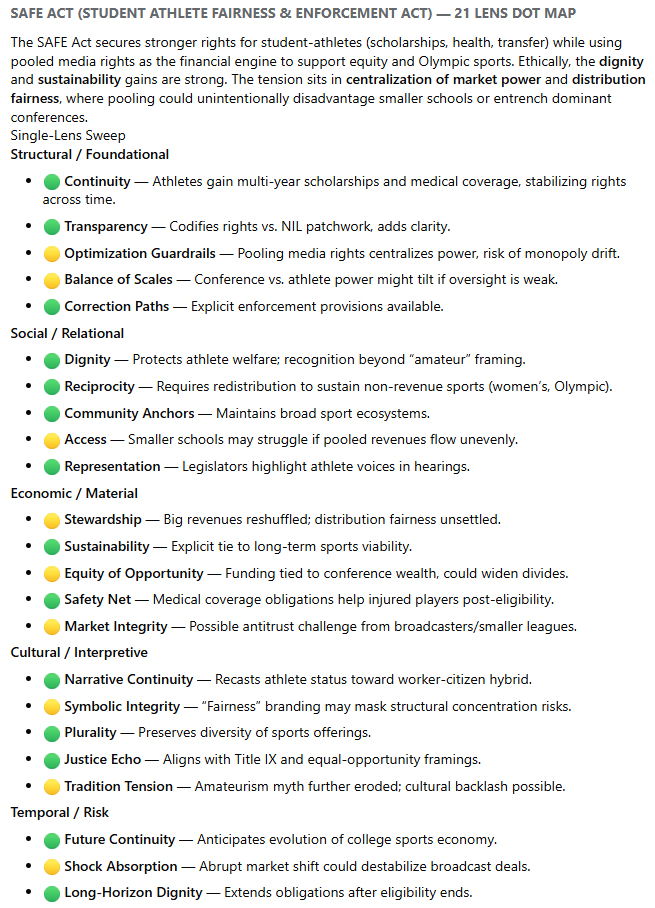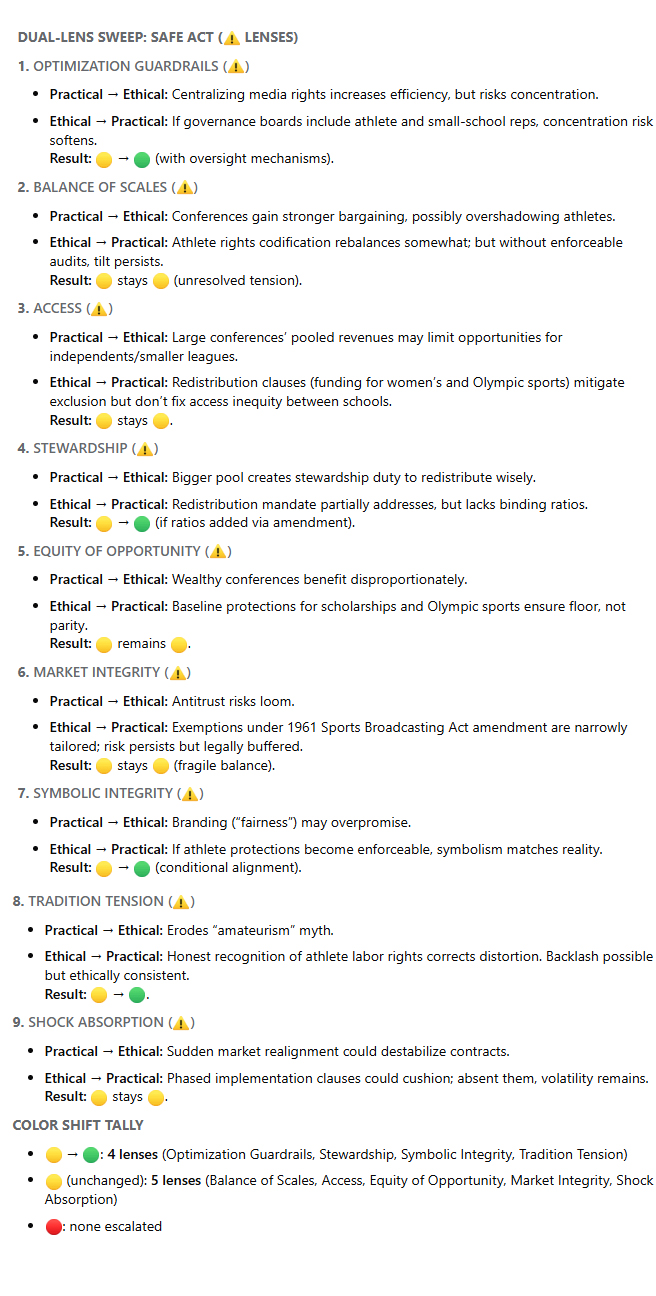How We Analyze Legislative Bill

The column on the left shows a single ethical pass across all twenty-one guiding lenses. Each lens asks a different question about fairness, dignity, responsibility, memory, or balance. As the sweep moves downward, each row records whether the policy aligns (🟢), creates tension (🟡), or risks distortion (🔴). This is the foundation step: every perspective gets checked, nothing is skipped.
A full sweep doesn’t end at surface impressions. If a lens shows tension, it signals an area needing correction or clarification. Distortions mark deeper problems, such as silenced voices, erased harms, or efficiency eroding dignity. Seeing the pattern in color makes hidden risks visible. The process is deliberately systematic, so judgments aren’t left to intuition alone.
What appears here is the first stage of analysis, not the whole picture. Later steps may combine lenses in pairs or triads to test how principles interact, but the single sweep anchors everything. It is a structured way to balance competing needs while keeping coherence intact. By following this map, the analysis preserves integrity, shows where repair is needed, and builds a record that can be traced openly.
One standard of integrity, visible to all.

A single-lens pass is powerful for spotting where tensions and distortions appear, but it cannot always explain why they arise. Ethical principles rarely live in isolation; they push and pull against each other. A second sweep, using two lenses at once, allows the analysis to track those interactions directly. This shift turns the process from a static scan into a dynamic test of relationships.
Choosing the right pair of lenses is not arbitrary. The selection is guided by what the first sweep uncovered. If dignity seems strained, it may be paired with continuity to test whether people’s rights can hold steady alongside government services. If efficiency risks eroding fairness, those two lenses are locked together to see if balance can be restored. The choice itself is a diagnostic act.
By applying lenses in pairs, hidden dependencies come into view. Sometimes a tension is not a flaw in the bill itself but the result of one principle leaning too heavily without the counterweight of another. The dual sweep uncovers these inner mechanics, showing where a simple correction might resolve multiple issues at once. It reduces guesswork and sharpens accountability.
The result is deeper clarity. Instead of isolated signals, the analysis shows how values connect across the whole structure of the bill. This helps distinguish between passing frictions and true structural risks. The dual-lens sweep is, in short, the move from identifying problems to understanding them. It creates the ground for repair, resilience, and more trustworthy policymaking.
Balance is Proven in Relationship.

From Problems to Practical Repair
The lens analysis is not meant to stop at highlighting flaws. A yellow or red mark does not mean failure, but it signals where careful adjustment can unlock alignment. Every issue flagged is paired with a practical fix that respects the core design of the bill. The aim is always minimal change for maximum correction.
Amendments are crafted to work with the grain of the policy, not against it. Where athletes risk losing bargaining power, the fix is not to scrap the structure but to add a board that balances voices. Where small schools risk exclusion, the solution is a baseline fund that keeps them in play. Each proposal is incremental, targeted, and achievable within existing frameworks.
These adjustments also prevent reform fatigue. When change is sweeping or disruptive, it breeds resistance and instability. By focusing on precise, proportionate measures, the process makes reform more durable. Stakeholders can adapt without collapse, and the public can trust that fairness is being built steadily rather than imposed abruptly.
This method shows that problems are not immovable obstacles. They are stress points in need of reinforcement, not reasons to abandon the structure. By treating tensions as invitations to refine, the process turns critique into constructive repair. What emerges is not only a clearer picture of risk but a roadmap to resilience.
